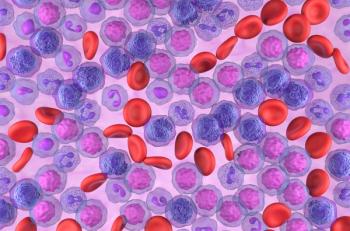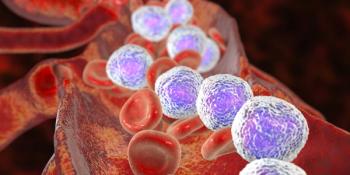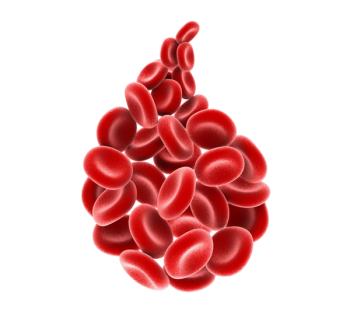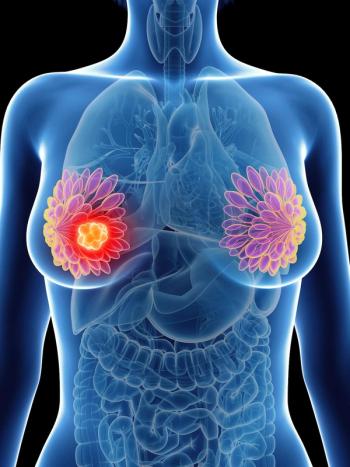
CancerNetwork® Recaps Gong’s Twitter Takeover at ASCO GI 2022
Jun Gong, MD, hosted a Twitter takeover during the 2022 Gastrointestinal Cancers Symposium where he discussed breaking presentations in a #CNRealtimeReport.
The
During all 3 days of the conference, CancerNetwork® held a Twitter takeover hosted by Jun Gong, MD, a medical oncologist of the Gastrointestinal Disease Research Group, Pancreatic Research Group, and Urologic Oncology Program in the Samuel Oschin Comprehensive Cancer Institute at Cedar Sinai. Gong spotlighted breaking abstracts during a #CNRealtimeReport, speaking to major takeaways and benefits of treatment.
First-Line Lenvatinib Plus Transarterial Chemoembolization
An important study Gong discussed was the
Patients had an objective response rate (ORR) of 45.9% with the TACE regimen vs 20.8% for lenvatinib alone (P <.001) via RECIST 1.1 criteria. The median overall survival (OS) in the TACE arm was 17.8 months vs 11.5 months with lenvatinib alone (HR, 0.45; 95% CI, 0.33-0.61; P <.001). Median progression-free survival (PFS) in each arm was 10.6 months and 6.4 months (HR, 0.43; 95% CI, 0.34-0.55; P <.001), respectively.
Additional findings showed a partial response (PR) rate of 45.3%, a stable disease rate of 46.5%, a progressive disease rate of 7.6%, and a disease control rate (DCR) of 92.4% in the TACE arm. In the monotherapy group, corresponding rates were 20.2%, 51.8%, 27.4%, and 72.6%.
CheckMate 649
Next, Gong spoke about the
The median was 13.8 months (95% CI, 12.4-14.5) in the nivolumab group and 11.6 months (95% CI, 10.9-12.5) in the chemotherapy-alone group (HR, 0.79; 95% CI, 0.71-0.88). The median PFS in the nivolumab group was 7.7 months (95% CI, 7.1-8.6) compared with 6.9 months (95% CI, 6.7-7.2) with chemotherapy alone (HR, 0.79; 95% CI, 0.70-0.89).
Those in the nivolumab group saw a 25% reduction in the risk of death or disease progression on subsequent therapy (HR, 0.75; 95% CI, 0.67-0.84). The ORR for patients with a combined positive score less than 5 was 55% (95% CI, 48%-62%), with 7 patients having complete responses and 48 with PRs in the nivolumab group. The median duration of response was 7.7 months (95% CI, 6.2-9.9) in the nivolumab group vs 6.9 months (95% CI, 5.7-8.2) in the chemotherapy group.
No new safety signals were identified, and adverse effects remained consistent with the individual drug components.
TOPAZ-1
Next, Gong looked at data from a discussion of the
Gong wrote, “Dr. Azad breaks down #TOPAZ-1 does change #SOC as first PhIII positive trial over cis/gem in adv BTC…”
The trial investigated the use of durvalumab (Imfinzi) plus gemcitabine and cisplatin compared with a placebo and chemotherapy. At median follow-up times of 13.7 months and 12.6 months in the durvalumab and placebo arms, respectively, it was found that the addition of durvalumab led to better OS at 12.8 months (95% CI, 11.1-14.0) vs 11.5 months (95% CI, 10.1-12.5) with placebo. The 18-month OS rate for the durvalumab group was 35.1% (95% CI, 29.1%-41.2%) vs 25.6% (955 CI, 19.9%-31.7%) in the placebo arm; 24-month OS rates were 24.9% (95% CI, 17.9%-32.5%) and 10.4% (95% CI, 4.7%-18.8%), respectively.
KEYNOTE-590
Finally, Gong spoke about the
The median OS was 12.4 months in the pembrolizumab group vs 9.8 months in the chemotherapy alone group (HR, 0.73; 95% CI, 0.63-0.86). Additionally, the 1-year OS rates were 51% and 39%, respectively, with 2-year OS rates of 26% and 16%.
In the overall population, the PFS was 6.3 months in the pembrolizumab group and 5.8 months in the chemotherapy alone group (HR, 0.64; 95% CI, 0.55-0.75). The 1-year PFS rates were 25% and 12%, respectively, with 2-year PFS rates of 12% and 3%.
Gong concluded with, “…no new safety signals, no deterioration in QoL, 20% vs 6% response duration >24 mos.”
To view the full Twitter takeover,
Newsletter
Stay up to date on recent advances in the multidisciplinary approach to cancer.


















































































